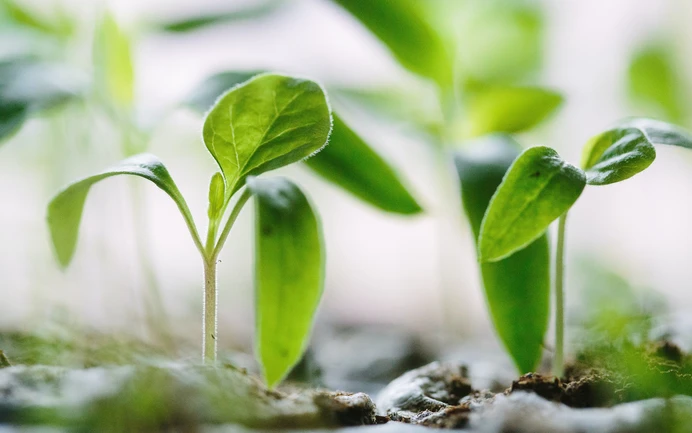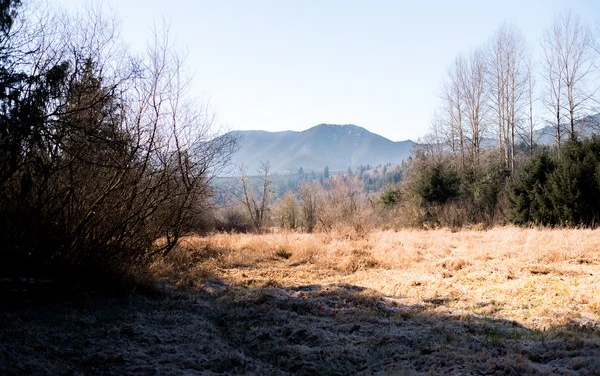
Tree Pod Burial Explained: Becoming a Tree After Death
By: Tom Harries
May 04, 2023 | Green Funeral Practice
4 min readTree pod burial is a concept that has captured the imagination of many people in recent years. The appeal is obvious and intuitive - becoming a tree after death sounds like a beautiful idea and a positive choice for the environment.
There are however some points worth clarifying about tree pod burial in its current forms. At present, tree pod burial doesn’t exist in quite the way many people hope. This article looks at how burial pods work and how much they cost, and highlights some practical issues. It also explains how human composting is likely to be a more appealing option for those who want to become a tree when they die.
Tree pod burials
What is tree pod burial?
As the name suggests, tree pod burial involves placing a body in a pod beneath a new or existing tree. The idea is that the body will nurture the tree, and that the two will in some respects become one.
It is important to distinguish between two forms of tree burial pods. The first is a cremation pod, in which cremation ashes can be placed. These take the form of biodegradable urns which can be buried beneath a tree.
The second is a body pod, which involves the body being buried whole within a pod and placed beneath a tree. This exists only in concept - while it is the form that most people have heard of and which sounds most appealing to many, it is not available anywhere in the world.
How does tree pod burial work?
In the case of cremation pods, the ashes are placed into the pod with other materials, a young tree is placed above the pod, and the pod is then ‘planted’. The pod biodegrades after planting. Cremation ashes have a high pH and can be damaging to trees and plants - the additional materials are designed to prevent such issues. It is perhaps a stretch therefore to say that the body is directly nurturing the tree, as the ashes themselves are not positive for plantlife.
The short answer as to how whole body burial pods work is that they don’t. Popular design drawings show a body in a fetal position inside an egg-shaped pod with a tree above. This concept is, however, not a reality.
How much does tree pod burial cost?
The price of tree burial pods varies. Cremation pods tend to cost a few hundred dollars, and you may need to pay for a young tree on top of this. As whole body pods do not exist in practice, a cost estimate cannot be given.

The problem with tree pod burials
The most obvious problem with death tree pods is that the idea that has attracted the most interest - the whole body pod - does not exist. The idea seems unlikely to become available in the form shown in popular images, as it would be near impossible for the body to be placed in the position displayed after death. Even if this was possible, practical issues such as hard ground in hot summers and frosty winters present another problem.
The biggest disadvantage of cremation pods is that they involve cremation in the first place. Many people who like the idea of becoming a tree are nature lovers who are concerned about their environmental impact. Unfortunately, cremation is bad for the environment. As a fossil fuel driven process, each cremation emits carbon emissions equivalent to a 609 mile car journey. While planting a tree is undoubtedly a good thing, the cremation that precedes it is environmentally unfriendly.
Another problem is that the link between the body and the tree is perhaps slightly more tenuous than people hope. Cremation ashes are not positive for a tree on their own, and so it is difficult to say that it is the cremated remains rather than the surrounding soil, which are nurturing and becoming the tree.
What’s the best way to become a tree when you die?
There are more direct and more environmentally friendly ways of becoming a tree after death.
Becoming a tree
Human composting is perhaps the most direct and meaningful way to become a tree. An environmentally friendly alternative to burial and cremation, the human composting process gently transforms a body into nutrient rich soil over a 45-day period. The cubic yard of healthy soil output provides two ways to become a tree, each with their own appeal and beauty.
Families can use the soil to plant or nourish flowers or a tree, perhaps creating a small memorial garden. This provides a beautiful memorial for family and friends to connect with, representing a continuation of life.
Any remaining soil can be donated to conservation projects. Earth owns conservation land where the soil from our process is used to nurture, restore and conserve a beautiful corner of the Olympic Peninsula. This land is surrounded by Giant Maple, Red Cedar and Douglas-fir trees. The soil is so important to the restoration of this land that it can be very meaningfully said that a person is becoming a part of this forest and returning to nature.

For people who want their or their loved one’s cremated remains to become a tree, the soil from the human composting process can be mixed with cremation ashes, allowing family or friends to rest together.
Thinking about the environment
When considering the best way to become a tree, environmental impact should be at the forefront of our minds. With human composting, not only is the end product healthy and positive for trees, the underlying process is also natural and net carbon neutral. Earth’s facility uses 100% renewable energy, avoiding the pollution caused by cremation.
Get a quote in seconds.
The beauty of human composting
At Earth, we call our proprietary human composting process ‘soil transformation’. Conceptually beautiful and environmentally friendly, soil transformation is the funeral choice for conservationists, nature lovers and those who want to preserve the planet for future generations.
If you’re looking for tree pod burial in Washington or Oregon, then Earth’s soil transformation is likely to be the option that best suits your desires. We provide our services to residents of Seattle, Portland and all other cities in these states. If you are interested in giving back to the earth, read more about our human composting process and get an instant online quote.







